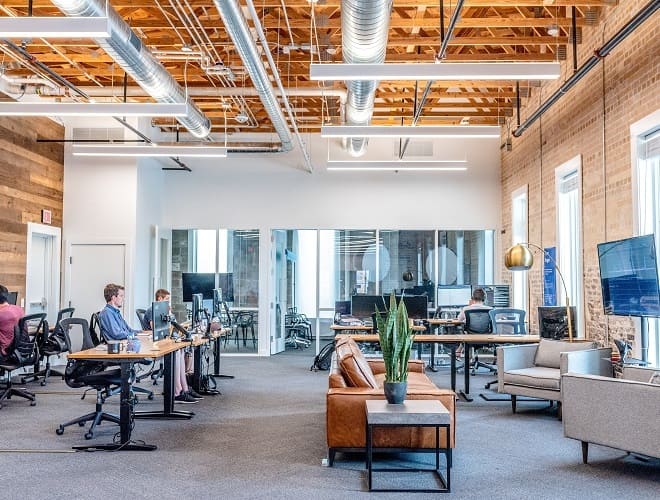Secure Access Service Edge (SASE) is a transformative solution that enables businesses to improve and optimize their network security, especially when scaling. This technology enables secure, high-performance network access to remote employees working in various locations.
Understanding SASE
SASE is an emerging solution that promotes holistic network security instead of a traditional center-focused approach. Secure Access Service Edge is an agglomeration and combination of solutions like firewall services, data loss prevention, and zero-trust network access with comprehensive wide area network capabilities into a single, cloud-based service model.
The significant spike in remote working, as well as the increased adoption of cloud technologies and edge computing, has compelled organizations to reconsider traditional network security protocols.
Presently, the limitations of conventional server-centric security models are being made evident as data is spread across SaaS platforms and cloud-based applications. Furthermore, users from distant locations are remotely accessing sensitive organizational information.
As more enterprises progressively adopt remote working, cloud-based solutions, and mobility, SASE continues to rival all point-based security solutions and make them less popular.
Why is SASE important?
Secure Access Service Edge is revolutionizing network security by providing organizations
-
quick and interrupted access to critical applications and data regardless of their location;
-
protection to the journey of the data they use, rather than the location where the data is stored; and
-
secure and speedy access to data to users from any location.
As businesses rapidly make the transition to remote working and cloud-based systems, SASE keeps its network security protocol relevant to global standards. This feature also strengthens an organization's competitive edge.
Furthermore, with the wide acceptance of front-line technologies like edge computing, conventional and legacy security solutions will slowly become obsolete, making the need for transformative solutions urgent.
Benefits of this Model
The SASE model
- provides immense flexibility
Scaling enterprises need to constantly upgrade their infrastructure. This requires scaling up and down of bandwidth based on the need of the hour. SASE allows scaling up and down, along with transitioning to a unified service with its components (cloud security, zero-trust network access, SD-WAN etc.) easily. Moreover, being cloud-based, SASE allows organizations to operate remotely, allowing location flexibility.
- is a cost-saving solution
Organizations with legacy network solutions utilize both physical and virtual appliances to scale their networking infrastructure. This involves employing numerous vendors for products and servicing. SASE eliminates that by enabling organizations with a single, cloud-native solution. Additionally, by optimising traffic flow through its software-defined approach, the SASE model significantly cuts down on operational costs.
- simplifies network management
The central cloud-based application structure of the SASE model makes handling multiple points in the network effortless. With cloud architecture, businesses can readily connect to resources located remotely in a secure manner. The solution seamlessly makes monitored global access to applications, the internet, and corporate data. Additionally, manual effort in maintaining the network by the IT team is also greatly reduced.
- integrates security, data protection and threat prevention
The SASE model upgrades the enterprise’s security by integrating data protection policies into the network. It also provides consolidated security protection, securing the traffic till the very end point of the network, i.e. the user. For example, it can detect ill-intentioned traffic requests and can intercept them before they cause harm to the network, consequently securing the network from possible DDoS attacks.
- improves performance
SASE secures dedicated internet access (DIA) that enables a single-pass parallel processing approach to apply security controls. This minimizes latency and improves application and network performance to optimize the user experience.
Why are businesses moving to SASE?
Recent network transition patterns display an increased use of SASE. Gartner predicts that at least 40% of enterprises will have explicit strategies to adopt Secure Access Service Edge by 2024. This is not without good reason, which can be explained as follows.
- Driving Cost-effectiveness
Most businesses rely on existing systems that were deployed to support employees who come to the office. Similarly, MPLS and various other protocols were once cutting-edge technology, but they are now obsolete since they were not developed for the remote workforce and do not meet the immediate needs of the organization, from a security standpoint.
In the efforts to adapt and compensate for the evident gaps, businesses have been compelled to deploy numerous additional services which have drastically increased spending and complexity.
SASE integrates SD-WAN, which is less expensive and also more robust than MPLS. Moreover, WAN optimization technologies can be implemented to improve performance.
Another factor that drives this model’s cost-effectiveness is that it eliminates the need for multiple vendors by leveraging one cloud-native solution. This allows organizations to reduce overall costs.
- Driving Global shift to cloud
As times change, our working methods are changing every day and presently employees need network access anytime and from anywhere. As a result, parameter-based network solutions are no longer optimal while outdated protocols create a bottleneck and hamper productivity.
Though data centers may have once held a central position, the degree of their importance has changed drastically. Presently, protection is now required wherever the user and the data are located.
SASE flips conventional security models upside down and shifts the focus from data centers to end-point users. While preceding approaches concentrated on constructing boundaries around applications, the solution is centered on the entities that utilize those applications, such as users, and brings security nearer to the entity.
It interactively enables or refuses service connections depending on business criteria provided by an organization and enables consistent and reliable network transparency and visibility. Thus encouraging the technological transformation of the enterprise.
- Driving innovation through security
Not too long ago, it was simpler to govern and forecast user experience when users were on the network, apps were in data centers, and servers and assets were owned and maintained by IT. A favorable user experience has always been essential for achieving buy-in to procedures and deterring users from looking for loopholes.
Additionally, even though applications have become cloud-based, users are still accessing applications through the traditional model. Routing remote traffic through data centers and then to the cloud has become a redundant practice that negatively impacts efficiency and productivity.
SASE delivers an improved user experience at a time when monitoring user metrics has become an increasingly cumbersome challenge. The way applications are handled and merged depends entirely on the users' preferences, rather than predetermined parameters over which they have no influence.
Furthermore, it is capable of controlling data and applications throughout your network.
Well-defined policies can be put in place to provide protection and security, regardless of the users' location. A more seamless and secure network experience leads to higher productivity and innovation.
The bottom line
SASE has arrived at a time when the need for pragmatic and secured global networking is at an all-time high. Never before have companies found the need to secure their data at access endpoints or, in a manner of speaking, decentralize enterprise network security. Additionally, emerging businesses express the dire need for scalability, and SASE architecture delivers just that.
SASE has changed the game by empowering organizations with an agile, cloud-native network security solution that drives digital transformation and future readiness.
Popular Searches
Broadband Connection | Internet Providers Near Me | Internet Leased Line Connection | SD Wan Technology | Managed WiFi Services | Managed Security | Video Analytics Platform | Difference Between Broadband and Wi-Fi | What is WAN | What is Broadband | What is WiFi | What is Leased Line | What is DNS | What is SASE | What is SIP Phone
















